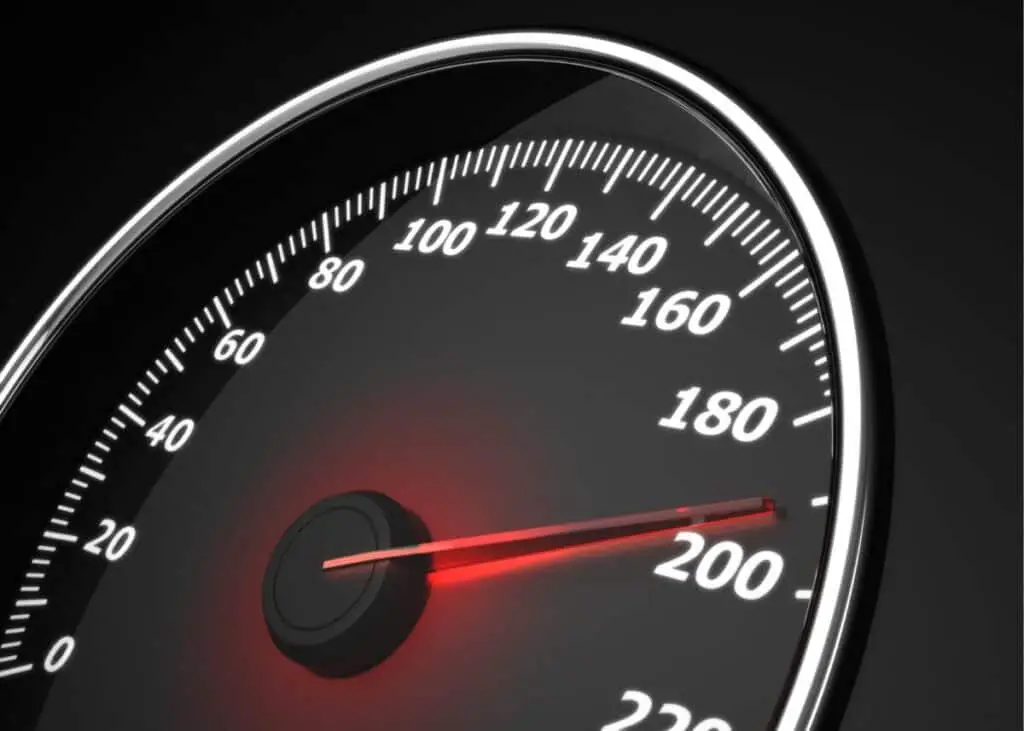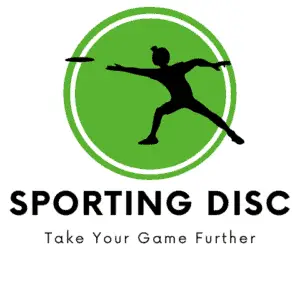Every disc golf disc I own includes flight numbers that indicate the speed of the disc. But, how can I know how fast I’m throwing the disc?
Disc speed can be measured based on matching your arm speed to the speed rating of the disc. I’ll explain how you can measure disc speed (and arm speed) using the flight numbers on the disc.
Table of Contents
Here is How to Measure Disc Speed in Disc Golf
The best way to measure the speed of a disc is to throw the disc and determine if it performs the way it’s intended based on the disc’s flight numbers. Flight numbers on the disc indicate speed, glide, turn, and fade. A disc thrown at the correct speed will achieve its intended flight path based on flight numbers.
In this post, I’ll explain how to determine disc speed, how you can match your arm speed, and why higher disc speed does not always mean more distance.

What Does Disc Speed Mean?
The speed of the disc is an indication of how fast the disc needs to be thrown to match how the flight numbers say the disc will perform in flight.
Disc speed is not an indication of how fast the disc will fly.
What this means is that a disc speed number of 14 won’t necessarily travel at a faster rate than a disc with a flight speed of 8.
If the flight numbers of the disc show that it has a turn of -1 and a fade of 3 you will need to throw the disc at the indicated speed rating to achieve those flight characteristics.
The higher the disc speed rating, the more aerodynamic the disc is. For example, a disc with a higher speed rating will have a thinner rim that cuts through the air and reduces drag.
The lower the disc speed number, the more blunt the edge of the disc will be.
Disc Flight Numbers
Most discs include numbers that give each disc a distinctive “personality”. If you know what the numbers mean they can tell you what flight path the disc will take when thrown correctly.
Flight numbers are important because they can tell you how the disc will perform in flight. This way you’ll be able to choose the correct disc for the situation.
Flight numbers are made of four digits that indicate speed, glide, turn, and fade. Each category is assigned a number on a scale.
- Speed: 1 to 14
- Glide: 1 to 7
- Turn: +1 to -5
- Fade: 0 to 5
Disc Speed Rating
A disc’s speed rating is a number from 1 to 14. Slower discs are lower numbers and faster discs are higher numbers.
A faster disc will cut into the air with less drag while a slower disc takes more force to throw through the air.
If you have the arm speed to match the higher speed rating of the disc, they will maintain their speed for a longer time when thrown.
How Do You Measure Arm Speed in Disc Golf?
Unfortunately, there are not many ways to accurately measure arm speed. The best way to measure arm speed is to match it to the speed rating on the disc.
If you’re unsure of what your arm speed is, you’re going to need to gather some discs with lower and higher speed ratings.
Start with the lower-speed disc. You’re going to need to pay attention to the glide, turn and fade numbers for this part.
As you throw the disc, does it fly the way it’s described on the disc? For example, if you have a turn of 0 and a fade of 0, this means that the disc will fly straight if it’s thrown at the correct speed.
If the disc speed says 8 with a turn and fade of 0 then if the disc flies straight you know what your arm speed is.
This method is the best way to determine and match arm speed to the disc. Keep progressively increasing the disc speed and watching how the disc flies.
When the disc stops flying as indicated on the flight number you’ll know your maximum arm speed.
Is Higher Disc Speed Better?
If you throw a higher disc speed, it won’t mean you’re necessarily a better player than a person who throws a lower disc speed.
The purpose is to throw a disc that matches your arm speed so the disc will take the correct flight path according to the flight numbers on the disc.
Glide, turn, and fade will all depend on whether or not you throw the disc at the right speed. However, when you need to throw for max distance and you also have the arm speed a higher disc speed is better.
A high-speed disc will fly farther when thrown with a matching arm speed. On the other hand, higher-speed discs are generally not as easy to control.
If you’re needing more control and less distance a slower speed disc is better.
How Fast Can a Disc Golf Disc Be Thrown?
The highest number on the scale of disc speed is 14. But, what does that mean in terms of speed? Not so much as it turns out.
The number on the scale has more to do with the design and aerodynamics of the disc, but throwing a high-speed disc doesn’t automatically make it fly farther and faster.
If you throw a disc with a speed rating of 8 and a disc with a speed rating of 14 they will fly at the same speed and distance.
This has to do with arm speed. Your arm speed has to match the speed of the disc. A person with a faster arm speed will throw a higher speed disc for the disc to take the correct flight path.
So, if you want your disc to fly at high speed, you have to throw it at a high speed too. This means increasing your arm speed.
How To Increase Arm Speed
The best way to increase arm speed is to improve your throwing form. There are a ton of variables with relation to good and bad form that affect arm speed for better or for worse.
Driving a disc cleanly without flutter will naturally increase arm speed. Bad release angle, rolling the wrist, or poor footwork can all affect the speed of the disc as it leaves your hand.
When Should a Slow Disc Be Used?
A fast golf disc is not always better. Sometimes the situation will call for a slower disc. There are advantages to a slower disc. Here are the best times to use a slower-speed disc.
- You need to throw for more accuracy from a shorter distance
- You’re still learning the correct throwing form
- If you have slower arm speed
- Throwing downwind
- Putting from close distance
Summary | How to Measure Disc Speed
Measuring the speed of a disc doesn’t mean getting your hands on a radar gun. In disc golf, speed is not thinking in terms of miles per hour.
The best way to measure disc speed is through trial and error. You’ll be testing different speed discs until you find the one that best matches your arm speed.
There is no other more accurate way to do this. Knowing what speed you can throw with can help your game too. This is because you can pick up a disc and understand its flight path based on the flight numbers.
This means you’re going to be able to use disc speed to choose the right disc for the right situation.
